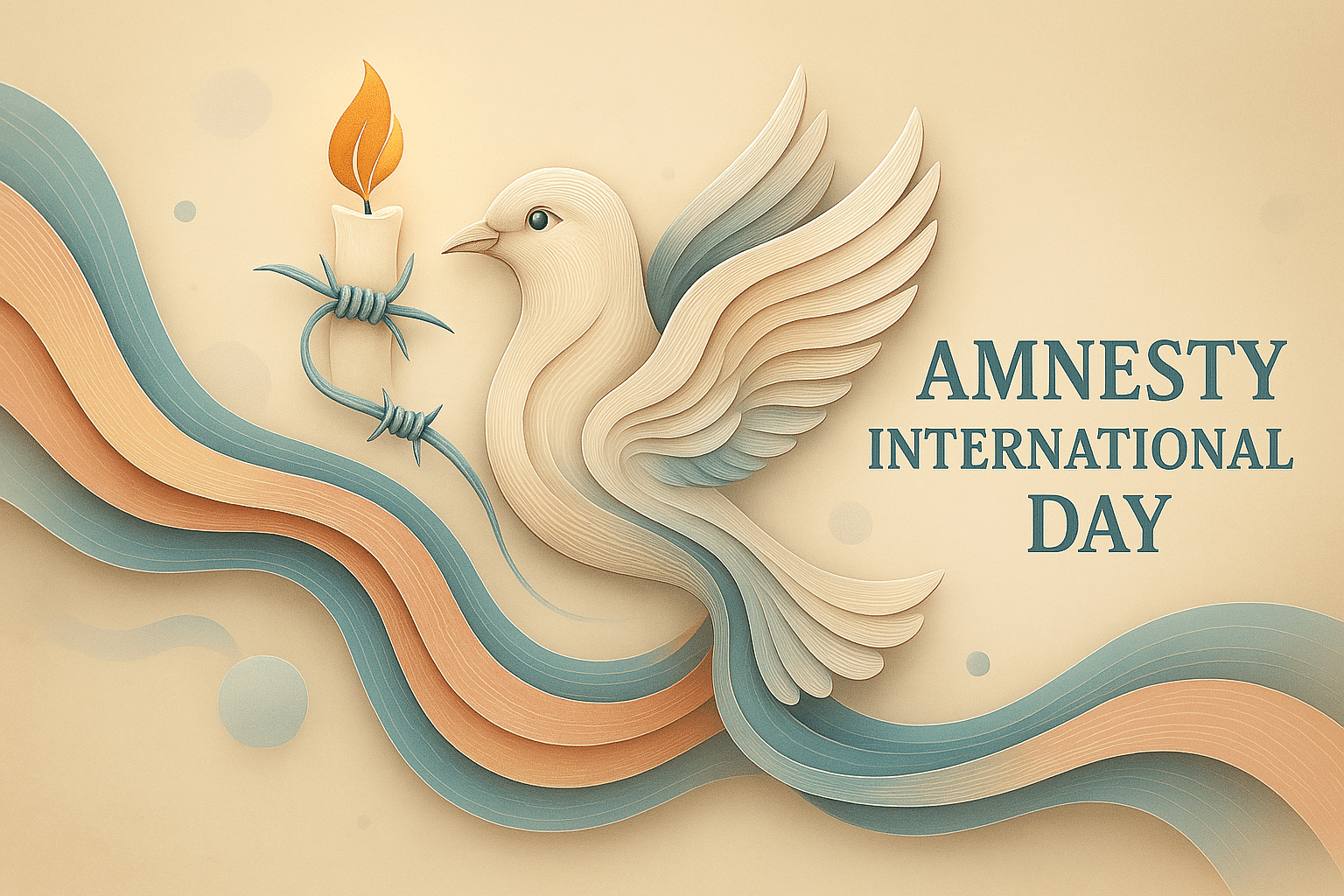What is Amnesty International Day?
Amnesty International Day is celebrated each year on May 28. The day marks the founding of Amnesty International and raises awareness about human rights issues around the world. It honours the fight for justice, freedom, and dignity for all people.
The day encourages global participation in promoting and protecting human rights. It invites reflection on the challenges faced by individuals worldwide who are imprisoned, silenced, or mistreated for their beliefs, identity, or actions.
History and Origin
Amnesty International Day commemorates May 28, 1961, when British lawyer Peter Benenson published an article called “The Forgotten Prisoners” in The Observer. The article described the arrest and mistreatment of individuals jailed for their peaceful beliefs.
This publication sparked the beginning of Amnesty International, which quickly grew into a global movement. Since then, the organisation has worked tirelessly to protect people from injustice and to defend the right to speak freely, live safely, and be treated with dignity.
Who Participates in Amnesty International Day?
- Human rights organisations: Lead campaigns, publish reports, and organise global actions.
- Educators and schools: Host discussions, debates, and educational sessions on freedom and justice.
- Activists and campaigners: Use the day to raise awareness and call for policy change.
- Writers and artists: Share stories and creative works to express solidarity with victims of injustice.
- Supporters worldwide: Sign petitions, attend events, and stand in support of universal human rights.
Slogans and Themes
Slogans include “Stand Up for Human Rights,” “Justice for All,” and “Freedom and Dignity.” Themes focus on solidarity, the right to speak freely, the fight against torture and oppression, and the defence of those who are silenced.
Colors symbols and patterns
Colors
- Yellow: Symbol of hope, action, and Amnesty International’s global campaigns.
- Black: Represents resistance, urgency, and the seriousness of the fight for justice.
- White: Used to reflect peace, transparency, and human dignity.
Symbols
- Candle with barbed wire: Amnesty’s official symbol, representing light in darkness and strength under pressure.
- Open hands: Show support, compassion, and protection.
- Broken chains: Symbolise freedom from oppression and unjust imprisonment.
Patterns
- Barbed wire lines: Used to reflect the restriction of rights and freedom.
- Light beams: Represent truth, exposure, and justice coming to light.
- Chains and links: Often appear in visuals, showing both oppression and the act of breaking free.
Most Used Hashtags
- #AmnestyInternationalDay
- #HumanRights
- #JusticeForAll
- #StandUpForHumanRights
- #FreedomAndDignity
How to Celebrate Amnesty International Day:
- Share information: Use your voice to post about human rights campaigns on social media.
- Attend or host an event: Join a workshop, vigil, or online seminar about justice and equality.
- Support a campaign: Sign a petition, write a letter, or take part in local advocacy actions.
- Learn something new: Read up on current human rights cases or watch a documentary.
- Have conversations: Talk with others about rights, freedom, and the importance of global solidarity.
Why is Amnesty International Day Important?
This day matters because millions still face injustice for who they are, what they believe, or how they live. Amnesty International Day gives us the chance to stand with those silenced by fear, violence, or repression.
It reminds us that rights are not guaranteed;they are protected by constant action. This day celebrates progress, exposes injustice, and urges everyone to continue the fight for a world where freedom, dignity, and justice are real for all.
Features
- Peace and Human Rights
